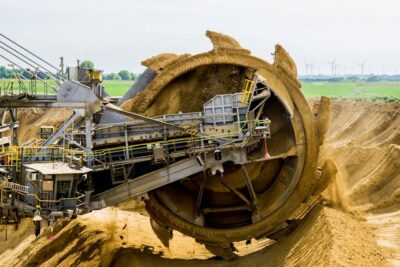If you really think about it all, the tech world isn’t just about smartphones, apps, and shiny new gadgets anymore. Nowadays, so many industries are using it, they’re using this brand new technology that the average consumer just can’t get ahold of, such as smart construction techniques being used thanks to the tech industry, but even something like residential plumbing has more tech involved than ever before.
Overall, it’s an ever-evolving landscape where engineering geniuses are redefining what’s possible. So, just go ahead and imagine robots saving lives, machines solving problems faster than the human brain, and technology that’s so advanced it seems like it belongs in a sci-fi movie. That’s not the future, but what’s happening right now.
Actually, this isn’t just about creating cool stuff for the sake of it. These engineering marvels are solving real-world problems, transforming industries, and completely changing how people live, work, and interact with the world. But what exactly are these? Well, let’s go ahead and take a closer look at some innovations that we can all expect to shape our whole future!
Artificial Intelligence
Yes, of course, this one had to be first, it’s been major for the last couple of years, and even the public has access to it. Besides, it seems like each month there are new and major improvements that happen thanks to AI, and AI also just improving. So, artificial intelligence has gone from being a tech buzzword to the backbone of innovation across industries (and again, it’s only been a couple of years). Engineers have taken machines and turned them into problem-solvers, creators, and decision-makers. Basically, AI is no longer just analyzing data; it’s helping doctors diagnose diseases, writing music, and even designing products.
But behind these incredible AI systems are engineers who have built neural networks and machine learning algorithms that mimic human thinking. While AI is still in a pretty new state, so far, it’s been great for those little things, like coming up with social media captions and scheduling meetings, it’s starting to predict traffic patterns, but at this moment, there are major cities with self-driving taxis. It’s learning to be helpful in ways people didn’t think were possible a few years ago.
Robots Taking on Dangerous and Dirty Jobs
Well, it’s going to take some time to get there, as robotics engineers haven’t gotten that far yet. Currently, it’s still humans having to do dangerous and dirty jobs such as going into a sewer (for example) and using a sewer camera, or some similar method. It’s not always the case, but basically, there’s maybe a little too much of the “human touch” for a job that’s actually not safe at all for a human.
But in due time (and most likely very soon), you’re going to find that robots are doing far more than just working at a factory assembling car parts. Essentially, it’s getting to the point where robots are tackling jobs humans can’t—or shouldn’t—do.
For example, this could be something like diving deep into the ocean, handling delicate surgeries (something that’s slowly being rolled out already, and of course, venturing into hazardous environments (such as anything involving sewage). It’s all about saving time, money, and even lives by taking on tasks that are dangerous or impossible for humans.
But what about the ones from Boston Dynamics (which are by far the most popular and beloved robots of them all), well, people love the sheer agility that most of them have (since it’s almost like a gymnast), and there are the medical robots that they’re still working out for pinpointing precision too. Overall, they’re not just machines—they’re problem solvers that are expanding what humanity can achieve.
Quantum Computing:
Quantum computing sounds like something out of a sci-fi flick (and it’s been mentioned in Star Trek before too), but it’s very much real, and yes, it’s changing the game in ways traditional computing never could. Engineers have built machines that use qubits, a type of data unit capable of existing in multiple states at once. Basically, this means quantum computers can perform calculations at speeds that are mind-bogglingly fast.
Why does that matter? Well, for starters, it’s enabling breakthroughs in fields like medicine, climate science, and cybersecurity. Plus, quantum computers are helping scientists model complex molecules, predict weather patterns with greater accuracy, and even solve encryption challenges that were once uncrackable. Now, this is hands down a major upgrade when it comes to traditional computing, but at the same time, it’s a new way of thinking as well.
Space Exploration
Technically, this isn’t anything new, back in 1957 the USSR launched the Sputnik 1, and that was technically a robot. Even back in 2011, NASA launched its first-ever humanoid robot, the Robonaut 2 (or R2 for short). While sure, robots in space aren’t anything new, they’re advancing, and with AI, yeah, you better believe they’re only going to advance more.
So, thanks to engineering ingenuity, private companies are now at the forefront of space exploration. You’re going to want to think of reusable rockets, miniaturized satellites, and AI-powered spacecraft.
For example, SpaceX’s reusable rockets have made space missions significantly cheaper and more efficient. Instead of scrapping rockets after a single use, engineers have developed systems that allow them to land back on Earth and be reused for future missions. It’s a revolutionary step that’s making space exploration accessible in ways it never was before.
Besides, it’s not just about rockets either. We have AI-driven rovers exploring Mars, satellites providing better connectivity back on Earth, and engineers are even working on spacecraft that can repair themselves mid-mission. It’s a whole new era of innovation that’s bringing space closer to home. While sure, space is still such a mystery, it doesn’t seem like it’ll be this way forever.
Engineering Renewable Energy
At this rate, everyone knows that sustainability isn’t just a trend, rather, it’s a necessity. There have been more changes thanks to sustainable causes, and it does seem like this is only going to keep growing. Right now, engineers are leading the charge by developing renewable energy solutions that are smarter, more efficient, and more accessible.
A more classic example would have to be solar power, but even engineers are creating floating solar farms that utilize unused water spaces, turning lakes and reservoirs into ideal spots for energy production. Currently, there are even works for wind turbines that are bladeless so they’re safer for birds and other forms of wildlife.
But overall, these innovations are making renewable energy more viable for everyday use, reducing reliance on fossil fuels, and helping combat climate change. Basically, every year, something major is happening, and that alone does make the future appear so much brighter.
Biomedical Breakthroughs
This has already been mentioned a few times, but it really doesn’t hurt to mention it again with its own section. Now, everyone out there needs medical attention at least one point in their life. The intersection of engineering and healthcare is delivering results that are nothing short of miraculous.
Basically, the world has come a long way in 100 years, even in just 10 years, and with AI, it’s only going to mean more major advancements in shorter periods of time. Now, there are advanced prosthetics (and they’re only advancing annually it seems), wearable tech now does more than track steps, and like what was mentioned earlier, delicate surgeries as well.
Smart Cities
If you think about it, cities are getting smarter. You used to have cop cars that would hide in bushes to track speeding vehicles, but nowadays, roads, bridges, and buildings are now being equipped with sensors that monitor wear and tear, predict maintenance needs, and even adapt to traffic patterns in real-time.
There are debates on where there should be lanes (even for highways) for self-driving cars, and whether or not there should be solar panels embedded, but overall, infrastructure seems to be getting more intelligent.



























